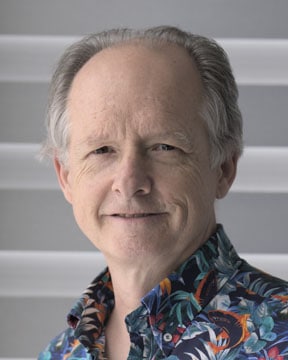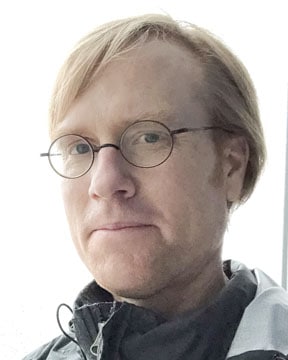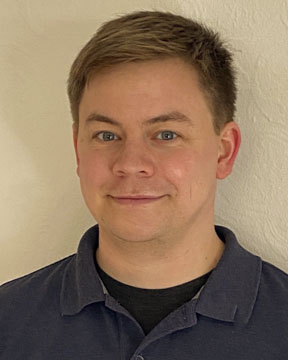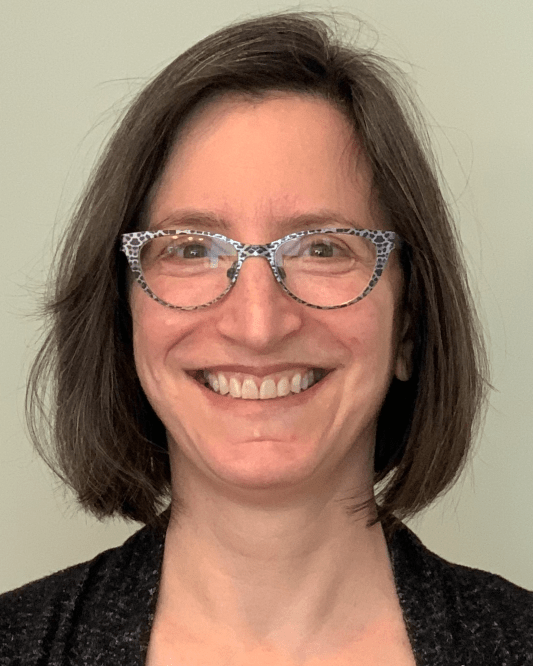Thursday, June 2, 2022, 3:30 – 4:30 pm EDT, Zoom Session
Organizers: Geoffrey Boynton, University of Washington and Ruth Rosenholtz, MIT
Moderator: Ruth Rosenholtz, MIT
Speakers: Andrew Watson, Apple; James Hillis, Oculus; Eric Seemiller, Wright Patterson Air Force; Peter April, VPixx Technologies; Oliver Flynn, FDA
So you have a PhD in vision science – now what? What opportunities are available outside of academia? What are the advantages and disadvantages of academic vs. other careers? How do I get a job in industry/government/a startup? How do expectations differ? These questions and more will be addressed in a one-hour session. Panelists will make short presentations, followed by Q&A and an interactive discussion with the audience and panel.

Peter April
CEO, VPixx Technologies
Peter April is CEO of VPixx Technologies. Originally inspired by Isaac Asimov’s portrayal of sentient robots, Mr. April is driven to help neuroscientists better understand the nature of consciousness. VPixx has assembled a unique team of talented scientists and engineers, and together we create the specialized stimulation and data acquisition instruments required by the world’s leading neuroscience researchers.

Oliver Flynn
Vision scientist and regulatory scientist in the Center for Devices and Radiological Health (CDRH) at the U.S. Food and Drug Administration (FDA)
Oliver Flynn, Ph.D. (he/him) is a vision scientist and medical device reviewer in the Center for Devices and Radiological Health (CDRH) at the U.S. Food and Drug Administration (FDA). He earned a Ph.D. from American University in Washington, DC, in 2016, where his research focused on human visual perception of motion and contrast. From 2016 to 2020, he conducted postdoctoral research in the clinic at the National Eye Institute, National Institutes of Health, in Bethesda, Maryland. This research centered on rod-mediated visual function changes in elderly patients with genetic and age-related eye diseases such as age-related macular degeneration (AMD), Stargardt disease, and retinitis pigmentosa (RP), and their relationship to the structural changes detected by clinicians. At FDA, Dr. Flynn applies his knowledge and experience in visual function testing and clinical trials to regulate ophthalmic devices before and after they enter the U.S. market. He works with multi-disciplinary teams of experts, including engineers, chemists, and clinicians, to ensure that devices are safe and effective for U.S. consumers. These devices include intraocular lens implants, pediatric in-home treatments, and screening tools. He lives in Washington, DC.

James Hillis
Research Scientists, Oculus
Dr. Hillis completed a Ph.D in Vision Science with Dr. Martin Banks at UC Berkeley on cue-integration and 3D shape perception. He worked in academia for the next 10 years: first as a post-post-doctoral research fellow at the University of Pennsylvania and then as an assistant Professor at the University of Glasgow. He then moved to industry, first as a color scientist at 3M and then as a research scientist at Meta (previously Oculus research). The latter position has involved developing perceptual quality metrics for AR/VR and research using models of perception and cognition to advance approaches to human-computer interaction. Overall, his research has spanned questions on color and space perception, visual search, spatial sound perception, multi-sensory integration, social interaction and models of higher level cognition for controlling human-computer interaction.

Eric Seemiller
Senior Vision Scientist, Wright Patterson Air Force
Eric Seemiller completed his PhD in vision science at Indiana University. Following postdoctoral studies at Smith-Kettlewell, the University of Texas-Austin, and back at Indiana University, he took a position as the Senior Vision Scientist at the United States Air Force Operational Based Vision Assessment Laboratory (OBVA) at Wright-Patterson Air Force Base. Though the visual environment of airmen has changed dramatically since the early days of the Air Force, many of the vision screening tests have not been updated at all. The overarching goal of the OBVA is to design and implement more relevant, reliable, and usable aeromedical vision screening tests and tools for incoming airmen. This involves both classic visual psychophysics, vision modeling, and the design of visually faithful flight and flying task simulation. OBVA partners with a number of industry and academic labs, along with colleagues in the other service branches. They also operate several state-of-the-art simulators to get at the heart of what aspects of the visual system are most relevant for operational success.

Andrew Watson
Chief Vision Scientist, Apple, Panel Process & Optics
Andrew Watson is the Chief Vision Scientist at Apple in Cupertino, California. He leads the application of vision science to a broad range of Apple technologies, applications, devices and displays.
Dr. Watson was an undergraduate at Columbia University and received a PhD in Psychology from the University of Pennsylvania. He subsequently held postdoctoral positions at the University of Cambridge in England and at Stanford University in California. From 1982 to 2016 he was the Senior Scientist for Vision Research at NASA Ames Research Center in California.
His research focuses on computational models of early vision, including spatial, temporal and motion processing, and application of vision science to imaging technology. He is the author of over 100 scientific papers, and he has seven patents, in areas such as acuity measurement, image compression, video quality, and measurement of display artifacts. He has 20,761 citations and an h-index of 63.
In 2001, Watson founded the Journal of Vision, where he served as Editor-in-Chief for 2001-2013 and 2018-2022.
Dr. Watson is a Fellow of the Optical Society of America, a Gold Fellow of the Association for Research in Vision and Ophthalmology, and a Fellow of the Society for Information Display. He recently served on the Board of Directors of the Vision Sciences Society. He currently serves as the Vice Chair for Vision Science and Human Factors of the International Committee on Display Measurement. In 1990, he received the H. Julian Allen Award from NASA. He is the 2007 recipient of the Otto Schade Award from the Society for Information Display, and the 2008 winner of the Special Recognition Award from the Association for Research in Vision and Ophthalmology. In 2016 he received the Holst Award from Philips Research and The Technical University of Eindhoven. In 2011, he received the Presidential Rank Award from the President of the United States.

Ruth Rosenholtz
Principal Research Scientist, MIT
Ruth Rosenholtz has explored a number of non-traditional career paths in vision science. Currently a Principal Research Scientist (read: soft money research faculty) in the Department of Brain & Cognitive Sciences at the Massachusetts Institute of Technology, she did a postdoc at NASA Ames and worked at Xerox PARC for a number of years as a researcher, then as a manager of a group charged with transitioning image processing-based research into products. She studies a wide range of visual phenomena, as well as applied vision, using a mix of behavioral methods and computational modeling. Her main research topics include attention and visual search; perceptual organization; and peripheral vision.
